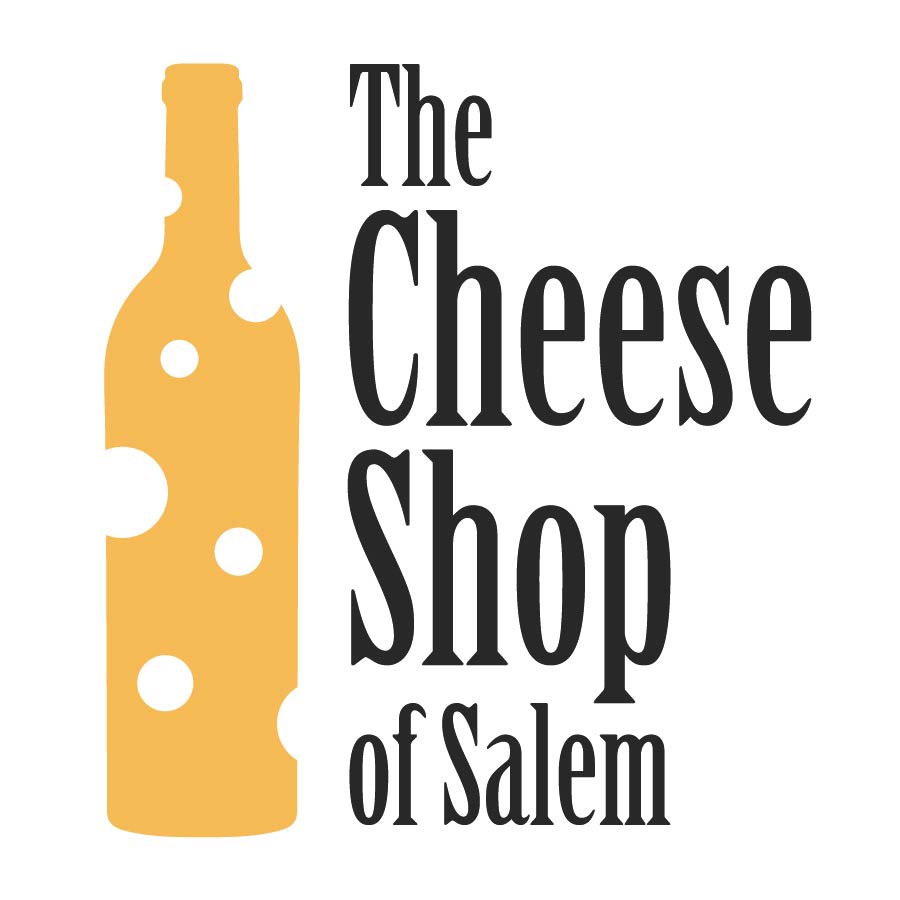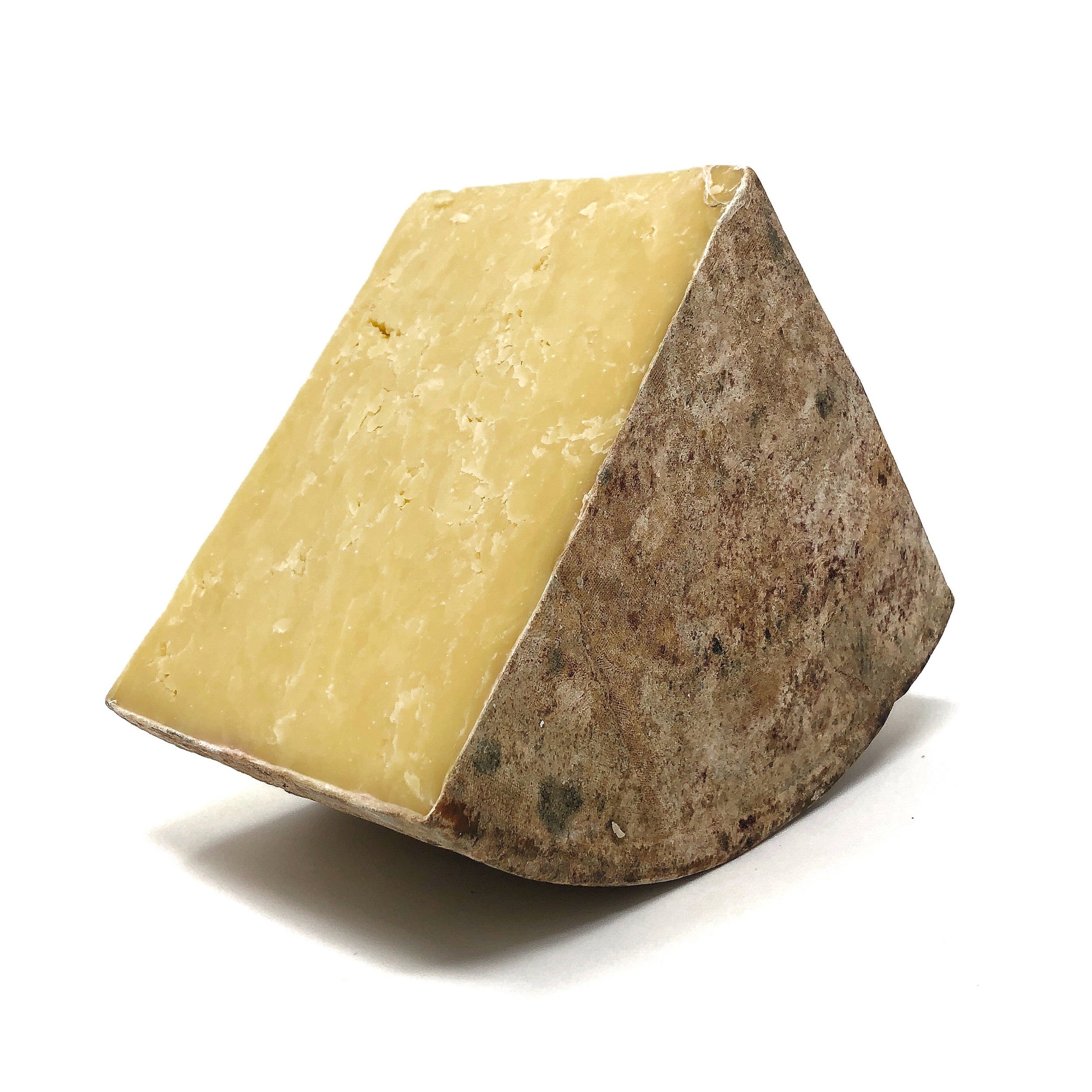Let's Talk Cheddar!
Let’s talk cheddar! Cheddar is one of the greatest cheeses out there. Whether it’s mild and milky, sharp and acidic, sweet and caramelly, earthy and rustic, moist and smooth, or dry and crumbly, cheddar DELIVERS. But how is there so much variation among cheddars?
Well, as always, there are many complex factors that contribute to a cheese’s profile. But for now let’s just take one - rind! - and explore its significance through a fun comparison. Pitchfork and Prairie Breeze are two cheddars that vary noticeably in flavor and texture, and one of the main reasons for that is that Pitchfork is bound in cloth and Prairie Breeze is cryovaced (vacuum sealed in plastic).
Before we dive into all those rinds, let’s zoom backward to the birth of cheddar in 12th century southwest England where the pastures were always green and the cows gave plenty of milk. The first cheddars were, ummm, inconsistent, to put it politely. These larger cheeses needed a longer aging time because of their size, giving them ample time to crack, rot, and become the perfect place for maggots. Yummy! Nonetheless, cheddar’s popularity grew and by the 1600s, cheddar makers were pre-selling their entire stock. Although they were increasingly successful at producing consistent wheels, cheesemakers at the time still expected to throw away about half their cheddar due to quality issues!
It wasn’t until 200 years later that cloth – muslin, cheesecloth, even lace at one point – made its way onto the rind of these cheeses. Why? Well clearly, they needed help. Sorry, cheesemakers of the past, thank you for launching us forward, buuuuut we want more than a 50% yield here. Cloth, which had been used on other types of English cheeses for centuries, helped prevent moisture loss so that cheddar could age for two or three years without drying into a hard, inedible nugget. It helped the cheese maintain its wheel shape instead of just becoming a lump. Also, re: maggots, it protected the outside of the cheese and made it easier for cheesemakers to clean off anything funky.
Cheesemakers still use cloth for these reasons, but now flavor has also become a major motivating factor. A cloth rind has some permeability, so moisture does evaporate as the cheese ages, making it more intense. It also allows flavors from the cellar to affect the cheese, so clothbound cheddar tends to taste earthy and minerally. Sometimes, a bit of mold floating around in the cellar can also get into the cheese, adding blue veins and a bit of pepperiness. Actually YUMMY this time!
Try the Pitchfork Cheddar from Trethowan’s Dairy in Somerset for an excellent example of a clothbound cheddar. The paste is dense, and it has savory, complex flavors with a sour cream tang and juicy bite. If you have pickles, mustard, ham, and a malty pale ale in the fridge, I suggest you bring those out too.
For comparison, have a piece of Prairie Breeze from Milton Creamery in Iowa. This is a cryovaced cheddar, meaning it is vacuum sealed in plastic for the duration of its aging period. In the early 1900s, cheddar makers in the USA looked for ways to retain more moisture in their cheese, so they covered the wheels in wax. Soon, some producers swapped wax for even more reliable plastic.
There are certainly advantages to aging in plastic. There is even less moisture loss than with cloth binding, so cheesemakers have more cheese to sell no matter how long they age the cheddar. And they can age it for a LONG time if they want to. I once tried a ten-year-old cryovaced cheddar, and it was acidic as hell, but it definitely wasn’t dry! If the cheese is sealed, the environment in which it is aged is less important, so cheesemakers don’t have to worry as much about maintaining perfect humidity and microflora. However, without any interaction with the outside air, cryovaced cheddars can sometimes taste less complex than clothbound cheddar. This is not to say all cryovaced cheddars are boring, or all clothbound cheddars are wildly interesting, there’s a range in both types! You’ll find Prairie Breeze is no lackluster cheese – it tastes of butterscotch, green grass, and chicken broth. We use it in our Epic Grilled Cheese because of its sweet/savory balance and its ability to melt. If you try the two family members next to each other, you will taste the difference the rind can make!
For the love of cheese and the families,
Kiri




![Image [Square].JPG](https://images.squarespace-cdn.com/content/v1/58d5711a9f7456928cbaf420/1648056008033-NRN4BD1EH9VC2VZW2JCI/Image+%5BSquare%5D.JPG)